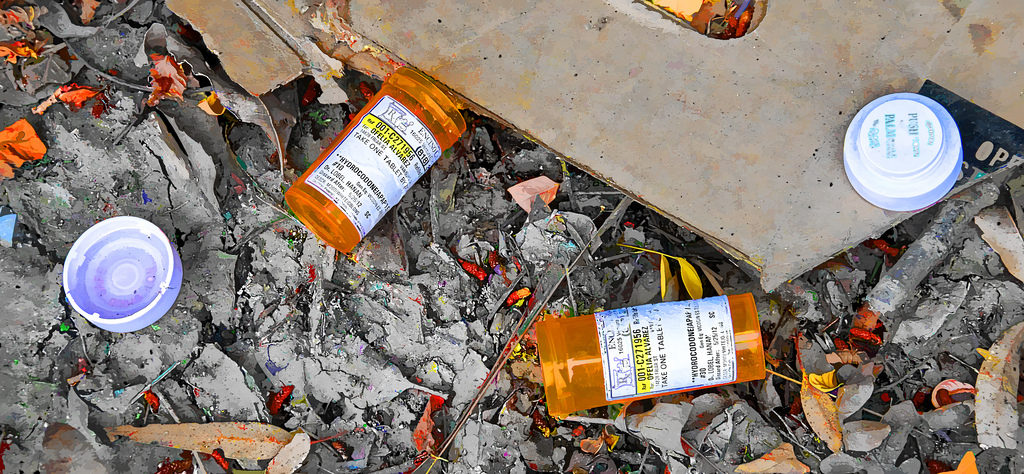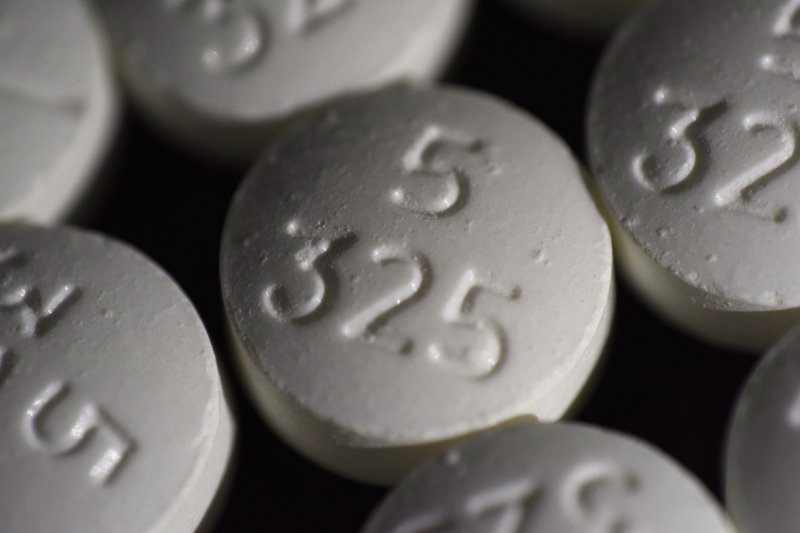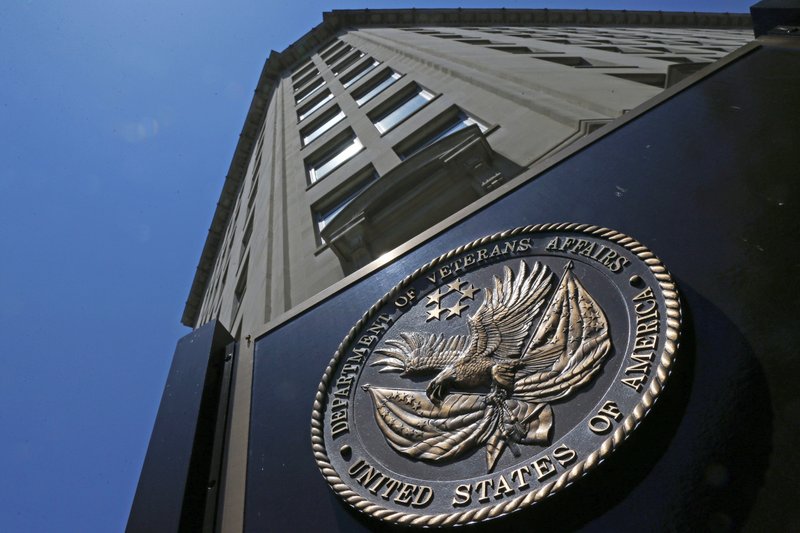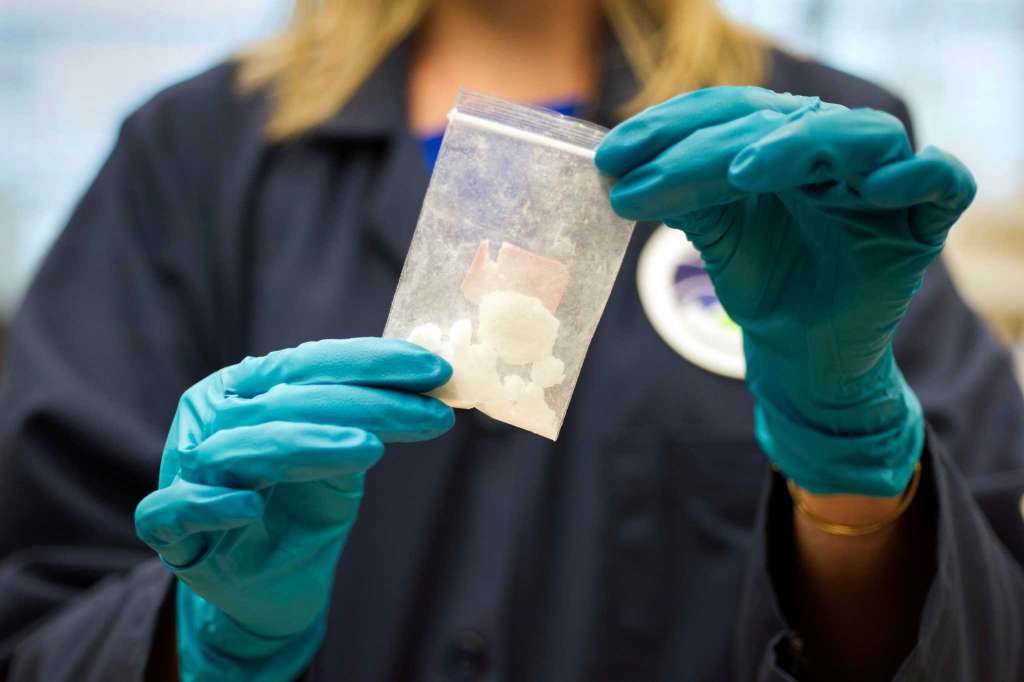Alabamians encouraged to participate in Prescription Drug Take-Back Day

Do you have unused prescription drugs collecting dust in your medicine cabinet? Well it’s time to clean them out this Saturday. Saturday marks the 16th annual DEA National Prescription Drug Take-Back Day where at approximately 50 collection sites across the state, Alabamians can safely toss their unwanted, unused prescription medications. Sponsored by the U.S. Drug Enforcement Administration (DEA), the program was created to combat the abuse or misuse of potentially dangerous medicines that have expired or are no longer needed for those whom these controlled substances were prescribed. From 10 a.m. to 2 p.m., law enforcement officers will be present at sites across the state to receive unused prescription drugs for safe and proper disposal. Alabama Attorney General Steve Marshall is encouraging Alabamians to participate. “Prescription Drug Take-Back is a valuable public service that protects our children, our homes and our environment,” said Marshall. “As a long-time prosecutor, I have too often witnessed the tragic results caused by the availability of dangerous controlled substances. When prescription drugs are left in our homes, children and teenagers may be poisoned or fall prey to drug abuse and addiction. Your old medications can be a lure to criminals looking for drugs to use or sell.” He continued, “On Saturday, October 27, please take the opportunity to remove these hazards by bringing prescription drugs that are out-of-date or no longer needed to collection sites for their safe and proper disposal.” History of the Take-back event in Alabama Since the first Take-Back event in Alabama, in September of 2010, the program continues to increase in the amount of drugs collected. Throughout all of Alabama’s previous DEA Prescription Drug Take-Back events, a total of about 66,805 pounds of unwanted, unused or expired drugs have been removed and disposed of safely. Deliveries of drugs to DEA Prescription Drug Take-Back Day events are confidential, with no personal information collected and no questions asked. Participants are encouraged to remove labels or black-out information beforehand. A listing of sites may be found through a search at www.DEATakeBack.com. If you do not find your area listed on the DEA website, please check with your local law enforcement officials to see if they may be participating in a Take-Back event.
Hill panel probing opioids abuse targets distributor firms

Congressional investigators say wholesale pharmaceutical distributors shipped hundreds of millions of prescription opioid pills to West Virginia, a state disproportionately ravaged by deaths caused by the addictive drugs. Now, lawmakers want executives of those companies to explain how that happened. Current and former officials from five distributor companies are set to give sworn testimony on the subject Tuesday to a House subcommittee. Their appearances come during an election-year push by Congress to pass largely modest legislation aimed at curbing a growing epidemic that saw nearly 64,000 people die last year from drug overdoses, with two-thirds of those deaths involving opioids. The House Energy and Commerce Committee began investigating the distribution of prescription opioids last May. The panel has said distributors sent more than 780 million pills of hydrocodone and oxycodone — prescription pain-killers that have caused many overdose deaths — to West Virginia from 2007 to 2012. That’s an average of more than 400 pills per person over that period in the state, where around 1.8 million people live. Investigators said 20.8 million opioid pills were shipped from 2006 to 2016 to Williamson, population 2,900. One pharmacy in Kermit, with around 400 residents, ranked 22nd in the U.S. in the number of hydrocodone pills it received in 2006, according to the investigation. West Virginia had the nation’s highest drug overdose death rate of 52 per 100,000 in 2016, according to federal figures. Other states with high death rates included Ohio, Pennsylvania and New Hampshire, as well as Washington, D.C. Nearly 12 million people misused opioids in 2016, according to federal figures. Executives slated to testify included top officials from Cardinal Health Inc., AmerisourceBergen Corp. and McKesson Corp., the nation’s three biggest wholesale drug distributors. The executives were appearing before the Energy and Commerce committee’s oversight and investigations subcommittee. The government requires distributors of controlled substances to report suspicious drug orders to the federal Drug Enforcement Administration and to deny questionable transactions. The Trump administration and lawmakers of both parties have been drawing attention to opioids, a range of pain-killing drugs that can be addictive when misused. They include prescription drugs like hydrocodone, oxycodone and codeine, synthetic opioids like fentanyl that can be made illegally, and illegal drugs like heroin. The Energy and Commerce panel has been working on dozens of bills that include encouraging doctors to use non-addictive pain killers, spurring research on such products, broadening access to treatment and giving financial incentives for drug treatment specialists to work in underserved areas. Senate committees are working on their own legislation. The setting was reminiscent of 1994 hearings at which executives of the nation’s tobacco companies testified before the Energy and Commerce panel, then controlled by Democrats. The officials said they didn’t believe cigarettes were addictive, despite evidence to the contrary. Four years later, the industry reached a settlement to pay the states more than $200 billion over 25 years to reimburse them for tobacco-related health care costs. Republished with permission from the Associated Press.
Mobile, Ala. joins the fights against opioid manufacturers

The City of Mobile, Ala. is hoping to hold the companies it says is responsible for dumping millions of dollars’ worth of prescription opiates into the community accountable. On Wednesday, the City joined nationwide public nuisance lawsuit against the pharmaceutical drug manufacturers and wholesale drug distributors that made the opioid epidemic possible. The move ensures the Port City would be entitled to a portion of any potential financial settlement. The suit is against five of the largest manufacturers of prescription opioids and their related companies and against the country’s three largest wholesale drug distributors. The manufacturing companies pushed highly addictive, dangerous opioids and falsely represented to doctors that patients would only rarely succumb to drug addiction. The distributors breached their legal duties to monitor, detect, investigate, refuse and report suspicious orders of prescription opioids. Because prescription opioids are a highly addictive substance, Congress designed a system in 1970 to control the volume of opioid pills being distributed in this country. It let only a select few wholesalers gain the right to deliver opioids. In exchange, those companies agreed to do a very important job – halt suspicious orders and stop control against the diversion of these dangerous drugs to illegitimate uses. But in recent years, they failed to do that and Mobile is now paying the price. The City of Mobile is working with a consortium of law firms to hold pharmaceutical drug manufacturers and wholesale distributors accountable for failing to do what they were charged with doing under the federal Controlled Substances Act – monitor, identify and report suspicious activity in the size and frequency of opioid shipments to pharmacies and hospitals. “Homes have been broken and families torn apart by this epidemic, which has claimed victims from all walks of life,” said Mayor Sandy Stimpson. “The pharmaceutical drug manufacturers and wholesale drug distributors failed in their legal obligation to notify the Drug Enforcement Administration of suspicious orders, even as the number of pills flowing into our city rose and rose.” The city has hired expert law firms experienced in holding the powerful pharmaceutical industry accountable. Those firms include: Levin, Papantonio, Thomas, Mitchell, Rafferty & Proctor; Baron & Budd; Greene Ketchum Bailey Farrell & Tweel; Hill, Peterson, Carper, Bee & Deitzler; McHugh Fuller Law Group; Taylor Martino, P.C.; Zarzaur Mujumdar & DeBrosse; Jinks, Crow & Dickson, P.C.; Lloyd & Hogan; The Frankowski Firm, LLC; Cusimano, Roberts, & Mills; and Rogers Law Group, PA. The citizens of Mobile continue to bear the burden of the cost of the epidemic, as the costs of treatment for addiction, education and law enforcement have continued to rise. Funds recovered through a winning lawsuit would be used to assist the city in maximizing resources in overcoming the opioid epidemic. Birmingham, Ala. and several other Alabama cities have also joined the suit.
Feds investigate dozens of thefts of opioids, other drugs at VA facilities

Federal authorities are investigating dozens of new cases of possible opioid and other drug theft by employees at Veterans Affairs hospitals, a sign the problem isn’t going away as more prescriptions disappear. Data obtained by The Associated Press show 36 criminal investigations opened by the VA inspector general’s office from Oct. 1 through May 19. It brings the total number of open criminal cases to 108 involving theft or unauthorized drug use. Most of those probes typically lead to criminal charges. The numbers are an increase from a similar period in the previous year. The VA has pledged “zero tolerance” in drug thefts following an AP story in February about a sharp rise in reported cases of stolen or missing drugs at the VA since 2009. Doctors, nurses or pharmacy staff in the VA’s network of more than 160 medical centers and 1,000 clinics are suspected of siphoning away controlled substances for their own use or street sale – sometimes to the harm of patients – or drugs simply vanished without explanation. Drug thefts are a growing problem at private hospitals as well as the government-run VA as the illegal use of opioids has increased in the United States. But separate data from the Drug Enforcement Administration obtained by the AP under the Freedom of Information Act show the rate of reported missing drugs at VA health facilities was more than double that of the private sector. DEA investigators cited in part a larger quantity of drugs kept in stock at the bigger VA medical centers to treat a higher volume of patients, both outpatient and inpatient, and for distribution of prescriptions by mail. Sen. Marco Rubio, R-Fla., said AP’s findings were “troubling.” He urged Congress to pass bipartisan accountability legislation he was co-sponsoring that would give the agency “the tools needed to dismiss employees engaged in misconduct.” The Senate is set to vote on the bill June 6. “The theft and misuse of prescription drugs, including opioids, by some VA employees is a good example of why we need greater accountability at the VA,” Rubio said. In February, the VA announced efforts to combat drug thefts, including employee drug tests and added inspections. Top VA officials in Washington led by VA Secretary David Shulkin pledged to be more active, holding conference calls with health facilities to develop plans and reviewing data to flag problems. The department said it would consider more internal audits. Criminal investigators said it was hard to say whether new safeguards are helping. “Prescription drug diversion is a multifaceted, egregious health care issue,” said Jeffrey Hughes, the acting VA assistant inspector general for investigations. “Veterans may be denied necessary medications or their proper dosage and medical records may contain false information to hide the diversion, further putting veterans’ health at risk.” Responding, the VA said it was working to develop additional policies “to improve drug safety and reduce drug theft and diversion across the entire health care system.” “We have security protocols in place and will continue to work hard to improve it,” Poonam Alaigh, VA’s acting undersecretary for health, told the AP. In one case, a registered nurse in the Spinal Cord Injury Ward at the VA medical center in Richmond, Virginia, was recently sentenced after admitting to stealing oxycodone tablets and fentanyl patches from VA medication dispensers. The nurse said she would sometimes shortchange the amount of pain medication prescribed to patients, taking the remainder to satisfy her addiction. Hughes cited in particular the risk of patient harm. “Health care providers who divert for personal use may be providing care while under the influence of narcotics,” he said. AP’s story in February had figures documenting the sharp rise in drug thefts at federal hospitals, most of them VA facilities. Subsequently released DEA data provide more specific details of the problem at the VA. Drug losses or theft increased from 237 in 2009 to 2,844 in 2015, before dipping to 2,397 last year. In only about 3 percent of those cases have doctors, nurses or pharmacy employees been disciplined, according to VA data. At private hospitals, reported drug losses or theft also rose – from 2,023 in 2009 to 3,185 in 2015, before falling slightly to 3,154 last year. There is a bigger pool of private U.S. hospitals, at least 4,369, according to the American Hospital Association. That means the rate of drug loss or theft is lower than VA’s. The VA inspector general’s office said it had opened 25 cases in the first half of the budget year that began Oct. 1. That is up from 21 in the same period in 2016. The IG’s office said the number of newly opened criminal probes had previously been declining since 2014. Michael Glavin, an IT specialist at the VA, says he’s heard numerous employee complaints of faulty VA technical systems that track drug inventories, leading to errors and months of delays in identifying when drugs go missing. Prescription drug shipments aren’t always fully inventoried when they arrive at a VA facility, he said, making it difficult to determine if a drug was missing upon arrival or stolen later. “It’s still the same process,” said Glavin, who heads the local union at the VA medical center in Columbia, Missouri. The union’s attorney, Natalie Khawam, says whistleblowers at other VA hospitals have made similar complaints. Criminal investigators stressed the need for a continuing drug prevention effort. The VA points to inventory checks every 72 hours and “double lock and key access” to drugs. It attributes many drug loss cases to reasons other than employee theft, such as drugs lost in transit. But the DEA says some of those cases may be wrongly classified. “Inventories are always an issue as to who’s watching or checking it,” said Tom Prevoznik, a DEA deputy chief of pharmaceutical investigations. “What are the employees doing, and who’s watching them?” Republished with permission of The Associated Press.
A look at border security, fencing as Donald Trump announces wall

President Donald Trump announced his long-awaited plan Wednesday to build a wall on the 1,954-mile U.S. border with Mexico, calling for its “immediate construction” to stop illegal immigration, drug and human trafficking and acts of terrorism. He is not the first president to embark on an aggressive buildup on the border. Here’s a look at what is already there: SEMI-FORTIFIED BORDER One-third of the U.S.-Mexico border, or 653 miles, is already studded with fence in a potpourri of styles, from menacing barriers to those that can be easily hopped. The barriers arose from the Secure Fence Act passed in the last year of the George W. Bush administration. In California, the fence climbs out of the Pacific. Its meanest stretch, three layers thick, separates San Diego from Tijuana. Half those 14 miles are topped by razor wire. In dunes to the east, a “floating fence” of 16-foot steel tubes can be raised or lowered as sands shift. Almost all of Arizona’s border is fenced, although the deterrence effect for human-and drug smugglers is constantly questioned. Cities such as Yuma and Nogales have high fencing but stretches of the remote desert have things like posts, wire-mesh and livestock fencing that can halt vehicles but people can hop. Vehicular fencing marks most of New Mexico’s 180-mile border. Nearly all Texas’ 1,250-mile border is fence-free, the winding Rio Grande the only barrier. The state has just 110 miles of fences and fortified concrete levees . Mountains, rivers and other natural barriers are expensive to build on and have been largely left alone . One stretch in Texas’ Hidalgo County along the Rio Grande cost $10 million a mile. SURVEILLANCE TECH Politicians along the border, even GOP lawmakers in Washington, have endorsed surveillance technology as offering more security for the buck than fence or wall. The Border Patrol is expanding the use of eye-in the-sky tethered dirigibles that scan the horizon as they float on cables and of camera-studded towers. Its high-flying Predator drones have logged more than 3,000 hours a year since 2011. Neither technology nor maintenance of existing fence comes cheap. The government spent $450 million last fiscal year on “Border Security Fencing, Infrastructure, and Technology.” And a major Boeing-led project in Arizona called the “SBINet,” whose network was supposed to marshal surveillance monitoring, proved a boondoggle, costing taxpayers $1 billion before it was canceled in 2010. PEOPLE CROSSING Not a single person involved in a terrorist act in the United States is known to have illegally entered the country from Mexico along the southwest border. Apprehensions of people at the border are far down from a peak of 1.6 million in 2000 to 408,870 in the year ending Sept. 30, with net immigration by Mexicans at zero. More Central Americans were apprehended illegally crossing the border than Mexicans last year. The Central Americans are fleeing a humanitarian crisis — the world’s highest murder rates and abject poverty. Most surrender at the border and seek asylum. The Border Patrol has bulked up, too, from about 9,500 agents in 2004 to some 17,500 today. The locals, meanwhile, mostly don’t want a wall. A May poll in U.S. southwest border cities found 72 percent against the idea. The Cronkite News-Univision-Dallas Morning News poll had a 2.6 percent error margin DRUG SMUGGLING Most drugs entering the United States sneak through legal ports of entry — not through fence-less wilds. They hide in concealed compartments of passenger vehicles or commingled with legitimate goods in tractor-trailers, the U.S. Drug Enforcement Administration says. The U.S. Border Patrol says it seized 1.3 million pounds of marijuana, most of it in Arizona, and 4,180 pounds of cocaine, most split between the San Diego sector and Texas’ Rio Grande valley, in the most recent fiscal year. Smugglers have been tunneling under fences for years, primarily in California and Arizona where marijuana is the payload. Authorities also occasionally find ladders constructed a foot higher than existing fence as creative smugglers find new ways in — and under. And since 1990, the DEA says, 225 border tunnels have been discovered. Off-road vehicles and backpackers are also used, but that tends to require scouts. Ultralight aircraft and drones have also made cross-border airdrops, mostly of marijuana. Republished with permission of The Associated Press.
5 things to know about America’s synthetic-opioid epidemic

Government scientists say they’re seeing the emergence of a new class of deadly drugs built to mimic the potent prescription painkiller fentanyl. What you need to know: — DOZENS OF VARIANTS The U.S. Drug Enforcement Administration‘s Special Testing and Research Laboratory has around 50 fentanyl-related compounds in its drugs database. Regulators are trying to catch up. China has blacklisted 19 fentanyl-related molecules and is now considering adding four more to its list of controlled substances, including the weapons-grade carfentanil . — EASY TO ORDER It’s easy to source synthetic opioids online from Chinese vendors. Associated Press reporters identified more than a dozen companies offer to export fentanyl-like drugs. Some say they’d lie on customs forms, disguise packaging and even guarantee delivery. After Chinese officials warned vendors that one analog, carfentanil, is hazardous and shouldn’t be sold, vendors started marketing other opioids, like U-47700. — DISPUTE OVER SOURCE COUNTRY U.S. officials say casework and investigations show China is the main source of fentanyl-related drugs. But no U.S. agency has been able to produce comprehensive statistics. China says U.S. claims are unsubstantiated and has asked for more evidence. — MEXICAN CONNECTION Mexican drug cartels are profiting from the opioid trade. Nearly two-thirds of the 61 kilograms (134 pounds) of fentanyl seized by U.S. customs last year came from Mexico. Mexican authorities raided seven fentanyl labs in 2014, five of them in Sinaloa state, according to the office of Mexico’s attorney general. Mexican and U.S. authorities say those labs mainly use material imported from China to make the drugs. — GROWING DEMAND, AND DEATHS The proliferation of synthetic opioids feeds U.S. demand. Last year, U.S. authorities identified derivatives of fentanyl nearly 2,000 times, up from just 78 times in 2014. Unsuspecting users have been overdosing in record numbers on these poorly understood new chemicals, which are often cut into heroin or counterfeit pills. Deaths from synthetic opioids, including fentanyl and related molecules, more than tripled from 2013 to 2015, hitting 9,580 last year. — Sources: U.S. Drug Enforcement Administration, China’s National Narcotics Control Commission, U.S. Centers for Disease Control and Prevention. Republished with permission of the Associated Press.
Alabama to participate in National Prescription Drug Take-Back Day

It’s time to clean out the medicine cabinet — the National Prescription Drug Take-Back Day is this Saturday from 10 a.m. to 2 p.m. Considering Alabama has more opioid prescriptions than it has residents — the highest prescription-per-capita rate in the nation at 1.2 pain-killer prescriptions written per Alabamian in 2015 — this is a date all residents should mark on their calendars. Sponsored by the Drug Enforcement Agency’s (DEA), Alabama has approximately 52 collection sites across the state where Alabamians can safely dispose of unwanted, unused prescription medications. “This is an important and basic step to fight drug abuse and drug-related crimes, by assisting in the removal of potentially dangerous controlled substances from our homes,” said Alabama Attorney General Luther Strange. “Many of us have outdated prescriptions that are too easily accessible to children and others. These drugs can also be the target of home invasions and burglaries. On Oct. 22, we are asking the people of Alabama to protect their homes and communities by locating medicines that are out-of-date or no longer needed, and bringing them in for safe and proper disposal.” Deaths from prescription drug overdoses have reached epidemic levels, claiming the lives of 78 people every day. The state of Alabama had a nearly 20 percent increase in overdose deaths from 2013-2014, which is why Strange’s office has worked closely with the DEA, U.S. attorneys in Alabama, the Alabama Department of Public Health, local law enforcement, and others to promote the Prescription Drug Take-Back program. Since the first take-back event in Alabama, in September 2010, the program continues to increase in the amount of drugs collected. DEA Prescription Drug Take-Back events last spring collected an estimated 5,351 pounds in Alabama of unwanted, expired, or unused drugs for proper disposal. Throughout all of Alabama’s previous events, a total of about 43,000 pounds of drugs have been removed and disposed of safely. Law enforcement agencies and interested community partners such as pharmacies, schools, and civic groups are working together to provide as many local sites as possible throughout Alabama. Each site will be supervised by a law enforcement officer due to the involvement of controlled substances. Deliveries of drugs to DEA Prescription Drug Take-Back Day events are confidential, with no personal information collected and no questions asked. Participants are encouraged to remove labels or black out information beforehand. People who wish to participate should inquire with their local law enforcement agencies, or may check the DEA website for a nearby location. A listing of sites can be found at dea.gov by clicking the “Got Drugs” box. If you do not see your area listed on the DEA website, please check with your local law enforcement officials to see if they may be participating in a take-back event.
Alabama bans ‘Kratom’ over addiction and abuse fears

A little-known plant-based substance often sold as an herbal supplement to address chronic pain is raising alarm bells in states concerned that it could be as addictive as heroin. The controversy around kratom — a plant originating in Southeast Asia — has led Alabama to become the sixth U.S. state to ban it. Kratom is now a Schedule 1 drug in Alabama, the same classification as heroin and ecstasy. Wisconsin, Vermont, Tennessee, Indiana and Arkansas have also banned the botanical supplement, and more states are considering the same course. The federal government, too, has worries about kratom. The Drug Enforcement Administration designates kratom as a “drug of concern” — meaning that, although it is still technically legal, it poses risks if abused. The U.S. Food and Drug Administration lists kratom as an herbal supplement, which means it is not regulated as vigorously as pharmaceuticals before it reaches consumers. The FDA warns of a range of side effects from vomiting to aggression and hallucinations. Yet the drug’s popularity is indisputable, and its advocates staunchly insist kratom is nothing more than a natural analgesic that can be safely used to alleviate pain, combat fatigue and reduce depression and anxiety. “Naturally occurring Kratom is a safe herbal supplement that’s more akin to tea and coffee than any other substances,” the American Kratom Association says on its website. Kelly Devine, an Alabama native who founded the group Kratom United, says some of the kratom products sold may be mixed with unhealthy additives but the plant itself is a natural pain reliever. “We’re not seeking drugs, we’re seeking relief,” Devine said. Kratom grows naturally in Thailand, Malaysia, and elsewhere in Southeast Asia and was traditionally chewed or boiled into tea by workers in that region of the world to boost productivity because kratom at low doses can act like a stimulant. At higher doses, kratom yields a sedative and pain relief effect. Experts say two properties in the plant –mitragynine and hydromitragynine–bind to the same brain receptors as classic opioids like hydrocodone, though kratom is less potent. Oliver Grundmann, clinical associate professor of medicinal chemistry at the University of Florida School of Pharmacy, said opioid addicts could get relief from kratom, since the same brain receptors are affected. In a 2013 University of Mississippi study, researchers found that mitragynine “blocked all withdrawal symptoms” in methadone-addicted mice who were fed kratom leaves. Researchers have seen heroin users cycle to kratom, but Grundmann says addicts are known to begin reusing heroin as the body develops a tolerance to kratom. Shortly after the law making kratom sales and possession illegal in Alabama took effect May 10, products like brightly colored “Krazy Kratom” bottles were being pulled from the shelves of retailers — gas stations and head shops in particular. Barry Matson, chairman of the Alabama Drug Abuse Task Force, doesn’t want to stand in the way of anybody getting medication that helps them but doesn’t think solutions can be found in a gas station product. “We don’t need this on shelves if it’s powerful enough to replace (heroin) for some people.” Though Matson said there are cases in Alabama of deaths and injuries involving kratom, Grundmann says he’s seen no evidence to indicate kratom was the “sole contributing drug” to an overdose death in the U.S. However, research is so limited that experts aren’t sure how other compounds in the plant interact with other substances. “We’re always trying to catch up behind the latest trends,” Grundmann said. “There are so many different drugs, so many different ways to abuse drugs that we don’t initially think about.” Republished with permission of The Associated Press.
Gov. Robert Bentley speaks out against “pill mill” doctors amid federal busts

Gov. Robert Bentley has made remarks about an epidemic of unscrupulous doctors intentionally over-prescribing powerfully addictive painkillers across the South, recently highlighted by a massive series of Drug Enforcement Agency busts known as “Operation Pillution.” Bentley, who is a dermatological physician by trade, indicated on Wednesday in a Montgomery news conference that the dozens of “pill mill” doctors and pharmacists caught by the DEA’s dragnet are “an embarrassment to the medical profession.” Gesturing to his personal prescription pad that allows him issue scrips for hydrocodone, OxyContin and other often-abused painkillers, Bentley said that when doctors break their Hippocratic oath to “do no harm” by writing prescriptions to addicts, they “change from being a physician to really being a drug dealer.” Nine people were arrested in Alabama on charges related to the federal sting, including two doctors. According to the DEA, 40 doctors overall were forced to give up their licenses, along with more than 228 arrests stemming from the latest stage of the year-old initiative launched last summer, which runs from Arkansas, Alabama, Louisiana and Mississippi. Agents arrested 48 people altogether on Wednesday. Twenty-two were from Louisiana, nine each in Alabama and Arkansas, and eight in Mississippi. Word of the operation came amid somewhat better news in the national war against prescription drug abuse: Deaths from pharmaceutical overdoses are down in after a 10-year ascendance, leveling off after a steep decline in 2012.


